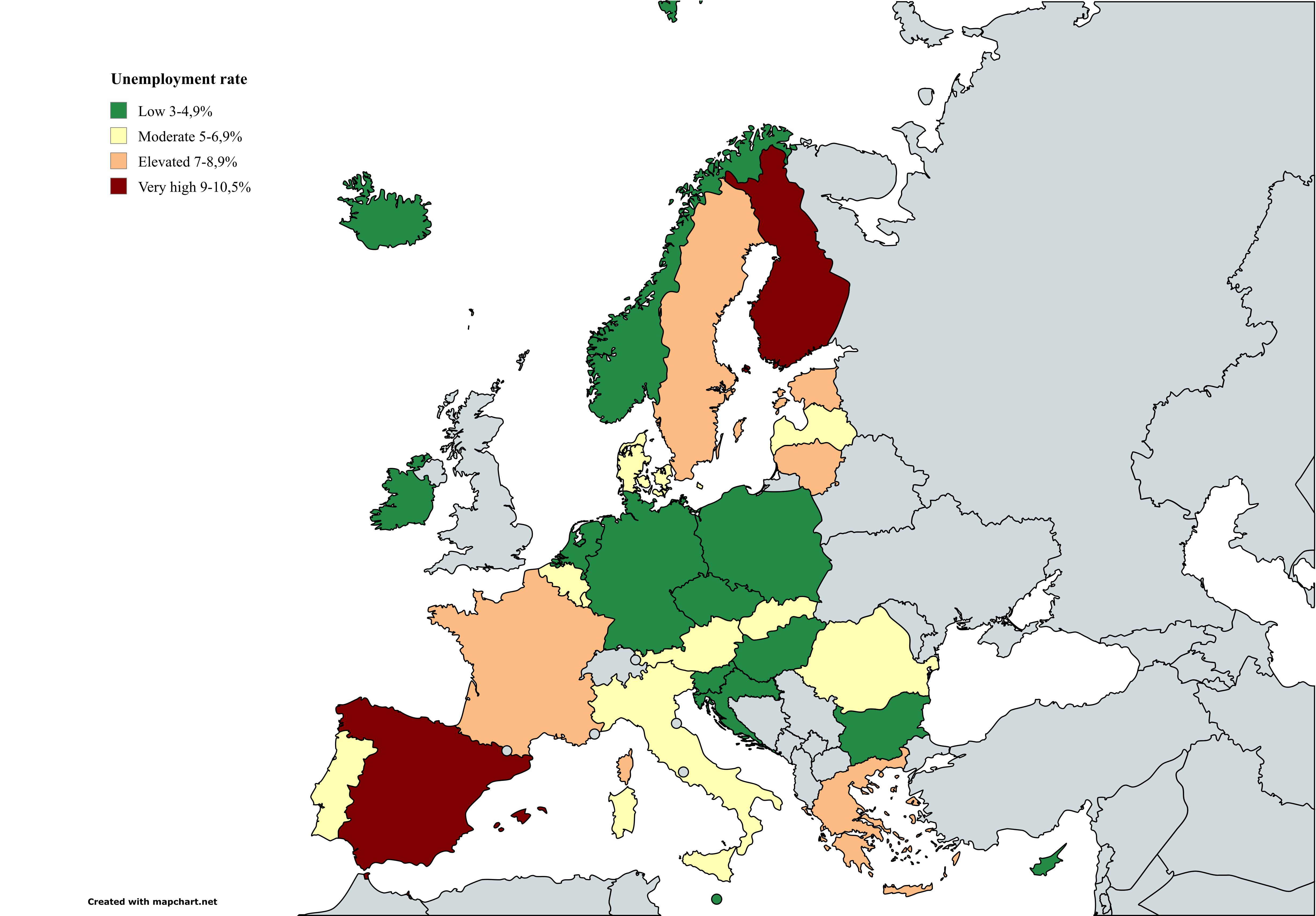Unemployment Rate Map September 2025


Alex Cartwright
Senior Cartographer & GIS Specialist
Alex Cartwright is a renowned cartographer and geographic information systems specialist with over 15 years of experience in spatial analysis and data...
Geographic Analysis
What This Map Shows
The "Unemployment Rate Map September 2025" provides a detailed overview of unemployment rates across various European countries, as reported by Eurostat. This visualization captures the percentage of the workforce that is unemployed, presenting a snapshot of economic health and labor market dynamics within the European Union. It serves as a crucial tool for understanding how different regions are faring in terms of job availability and economic stability.
Deep Dive into Unemployment Rates in Europe
Unemployment rates are a fundamental indicator of economic health, influencing everything from consumer spending to government policy. In Europe, these rates can vary significantly between countries and regions, reflecting diverse economic conditions, labor markets, and social policies. For instance, as of September 2025, countries like Germany and the Netherlands consistently showcase low unemployment rates, often below 4%. These nations benefit from strong industrial bases and robust vocational training programs, which help match workers with available jobs.
Conversely, Southern European countries such as Greece and Spain continue to experience higher unemployment rates, frequently hovering around 12% or more. The lingering effects of the 2008 financial crisis, combined with structural challenges in their economies, have contributed to persistent joblessness in these areas. Interestingly, youth unemployment in these countries is particularly alarming, often exceeding 30%, which raises concerns about the long-term economic prospects for younger generations.
Moreover, factors such as labor market policies, economic diversification, and geographical disparities play a crucial role in shaping unemployment rates. For example, Nordic countries like Sweden and Finland have implemented strong welfare systems that provide safety nets for the unemployed, making transitions between jobs smoother and less painful. Their proactive policies in skill development and retraining also ensure that workers can adapt to changing industry demands.
Additionally, the COVID-19 pandemic has left an indelible mark on unemployment trends across Europe. The economic disruptions caused by lockdowns and reduced consumer activity led to spikes in unemployment rates in 2020. However, by 2025, many countries have shown signs of recovery, attributed to government stimulus packages and a resurgence in sectors such as technology and renewable energy.
Regional Analysis
When we look at the unemployment rates across different regions in Europe, the disparities become even clearer. Northern European countries generally report the lowest unemployment rates. For instance, as depicted on the map, Denmark boasts an unemployment rate of just 3.5%, a testament to its agile labor market and favorable conditions for business development.
In contrast, the Mediterranean region is marked by higher unemployment. Countries like Italy show rates around 8%, with significant regional variations; for example, Southern Italy struggles more than the affluent North. This regional divide is often linked to economic opportunities, educational attainment, and investment in local economies.
Eastern Europe also presents a mixed picture. Nations such as Poland and Hungary have made impressive strides in reducing unemployment, thanks in part to foreign investments and a growing tech sector. However, countries like Bulgaria and Romania still face challenges, with unemployment rates that can reach over 6%, often tied to lower levels of industrialization and investment.
Significance and Impact
The implications of unemployment rates extend far beyond economic indicators. High unemployment can erode social cohesion, lead to increased poverty rates, and result in mental health issues among affected populations. Moreover, the economic strain caused by high unemployment can put pressure on governments to implement policies aimed at job creation, workforce development, and social welfare.
As we look towards the future, the trends in unemployment rates will be critical to monitor. The rise of automation and artificial intelligence in industries could reshape job availability, necessitating a shift in workforce training and education. Countries that proactively prepare their labor forces for these changes will likely fare better in the coming years. Furthermore, as the European Union continues to navigate economic challenges, the need for cohesive policies to address unemployment will be paramount.
In conclusion, the "Unemployment Rate Map September 2025" is more than just a representation of statistics; it reflects the underlying economic realities faced by millions of individuals across Europe. Understanding these trends is essential for policymakers, businesses, and citizens alike, as we all play a part in shaping the future of work and economic stability in our communities.
Visualization Details
- Published
- October 30, 2025
- Views
- 4
Comments
Loading comments...